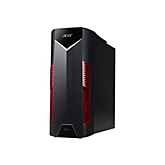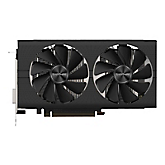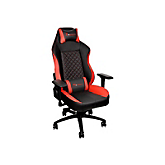Everything You Need to Know about Esports Gaming on PC
Ready to launch your esports team or own esports career? This guide will give you everything you need to know about choosing the right PC (or building your own), mistakes to avoid, and accessories to buy.
Should you build or buy your gaming PC for esports?
One of the most appealing aspects of a gaming PC is being able to get exactly what you want from your hardware. Gamers can purchase a prebuilt computer that meets their specifications, customize each component and have it shipped to them, or order each part individually and build the PC themselves.
There are many pros for each of these options. Going a prebuilt or customized route means far less manual labor, and likely will have a warranty should anything go wrong with the internals – for example, if the heat sink isn’t applied properly, you can quickly get the computer replaced with little issue. On the other hand, building your own gaming PC means more control over the individual components, so you not only get exactly what you want but likely will get the most out of what you buy. You’ll also save some money going this route and learn more about your hardware by getting your hands dirty with assembling the PC.
For an esports team, your inclination may be to buy prebuilt gaming PCs to save time and reduce potential issues. However, there are two things to consider. First, having your esports team members help build the PCs can teach them more about the hardware, fostering their interest further in computer technologies. Yes, this means it will take more time building and less time gaming, but it’s a valuable lesson and experience to be able to impart on your team.
Second, even with a prebuilt gaming PC, you’ll be able to swap components in and out. You can still expand storage space and RAM, upgrade graphics cards, add additional cooling components and more. This will be necessary as your hardware begins to age and new esports games begin demanding more resources. So, even a prebuilt PC can be customized in similar ways to a PC you assemble yourself.
TECH TIPS
Benefits of an Esports Team: K12 & Higher Ed
Starting an esports team can yield many benefits for a K12 or higher education institution, but those benefits aren't fully understood yet. This article helps identify the value that an esports team brings to a K-12 or college institution.
What should I know before building my own gaming PC?
Building a gaming PC is a lot like assembling a LEGO set. Once you get your pieces ordered and delivered, you need only put the pieces where they belong.
While we’re not going to write out an entire step-by-step guide on how to assemble a gaming PC (at least not in this post) there are some considerations we can give you as you get started.
- Be mindful of static electricity: Sounds like a silly warning, but nothing will ruin your day faster than a small shock frying your CPU chip. If you want to avoid accidentally becoming Emperor Palpatine and zapping a several-hundred-dollar component, stay in a controlled, static-free environment when getting your CPU set to your motherboard. Anti-static straps are also available relatively cheap, and a less-than-fifteen-dollar strap can save you several hundred dollars in the long run.
- Get the power: One of the most exciting parts about building a gaming PC is being able to shop specs – RAM, CPU, graphics card brand and make – but some of the less exciting aspects of building a PC are also the most important. Finding the right power supply to ensure your PC turns on, stays on, and doesn’t run into any problems is crucial. This will vary based on the computer you’re building – the highest end, full-VR ready, stream/record/edit/play machine will need exceptionally more amounts of power than something budget friendly, low end, meant to play older games or games with lower resolutions. Learn about what your power needs will be and make the right purchase the first time – to avoid a costly error.
- Keep it cool: Just as you want the right amount of power to keep your gaming PC going, you’re also going to want to keep your gaming PC cool. Get an efficient cooling system. This does not mean you need to spring for liquid cooling. Yes, it looks awesome. No, it’s not needed. Fans and proper ventilation work extremely well, and at a fraction of the cost. If you want to go for style and spare no expense, go for a liquid cooling setup – but also be careful to avoid any leaks and ruining many (if not all) of your components. That said, get some fans and have good ventilation and you’ll be good to go. Also: don’t overdo it with the thermal paste on the CPU. Too much is just as harmful as too little.
- Learn about the motherboard: Your motherboard is your computer’s nervous system. Everything that happens goes through the motherboard, so you’ll want to pick your motherboard first before any other component. If you have an idea of what you want from your gaming PC in mind already, use that as a template to find a motherboard that will ensure you’re getting the most out of it today – and in the future. Yes, while one of the most important benefits to a gaming PC (prebuilt or your own) is the ability to update it with new components, those components need to be able to go somewhere. If your motherboard is limited in the amount of RAM slots, doesn’t support overclocking, or some other feature you may want in the future, you’ll find your future self to be more restricted than you’d prefer.
- Plan for the future: Your gaming PC is an investment that you can continue to upgrade for years to come – provided, of course, you plan for this in advance. Don’t think about the games of today or tomorrow when you build your gaming PC, think about the games you’ll want to play in five years. Will your computer be able to handle these games at the settings you prefer? If the answer is no, are you planning for your hardware to be upgraded at that time? Think ahead, plan accordingly, and remember that a gaming PC is something you can build on, so plan your foundation well.
WHITE PAPER
How Video Games Have Evolved to Become a Valuable Education Activity
Esports have grown to offer benefits to both the K-12 and higher education levels.
What else does my gaming PC need to be esports-ready?
At a glance, a gaming PC should meet all your esports needs. What you need to decide is what you’re trying to achieve beyond playing.
While gaming is a pretty big part of esports, you may decide you want to go beyond playing. Streaming your gameplay, recording and editing footage to upload on video hosting platforms, communication with your teammates, and the equipment you choose will impact not only your esports experience but what you’ll want out of your hardware.
Get the right hardware resources
It’s a question of resources, especially when you look into streaming or recording and editing. If your team plans on streaming you’ll want to be able to ensure you can broadcast at a high resolution. That means you’ll want a good wireless adapter as part of your hardware. You’ll also want a good microphone or headset so your team can talk to their audience while they’re playing. Most streamers also use a camera to show themselves while they play. Streaming is a great way to give your esports team a face and personality, and either get greater exposure to the team or help with recruiting (if you’re running a higher education team).
Beyond the accessories aspect, you’ll want to make sure your gaming PC is capable of handling gaming at your and your team’s video and display preferences while running a streaming application. That means you’ll need to have more CPU and memory resources available to pull from – likely increasing your specs, as well as your cost.
Recording and Editing Your Team’s Streams
Recording and editing will be similar in terms of hardware resource demands, but with the added need of video editing software. While most streaming software is available for free (some may even come as part of your graphic card’s software), video editing software may need to be purchased separately. You can always try some free software options but may find them limiting.
Whether you get free or purchased editing software, you’re also going to want to make sure your computer has the right resources to record and edit your gameplay smoothly. Nobody wants to spend hours waiting for the video processor to load, compress or export files, so make sure your gaming PC is also designed to handle editing if that’s the route you wish to pursue.
Add an Esports Accessory
Next, you’ll want to consider the accessories and components that go with your gaming PC. Whether you build or buy prebuilt, your gaming PC is just that – a PC. You’ll need to look into purchases like a mouse, keyboard and monitor to complete the fit (along with any connectivity components, like an HDMI cable). Keep in mind when it comes to gaming you may want to invest in more gaming-specific products. For example, a mechanical keyboard will be more responsive and tactile than a regular keyboard, and is much preferred by gamers. A gaming monitor will have higher refresh rates, better resolution, and be able to sync better to your gaming experiences than your average LCD or LED monitor. Don’t get caught up in resolution alone. A 1080p gaming monitor with a higher refresh rate will make a better gaming experience for you than a 4K monitor with a lower refresh rate.
Ensuring your team can communicate with one another is critical, especially if they’re playing a cooperative game competitively. Investing in a good gaming headset with high quality sound and a good microphone ensures you’ll be able to hear your teammates and the game while they can hear you clearly. Some gaming PCs may have a built-in microphone, and the monitor will likely have an audio output, but these will both be weak and can cause more problems in the middle of a game by hard-to-hear audio or unclear sounds going into your microphone.
Get the Right Furniture
Last, but not least, is furniture. It can be easy to handwave your furniture needs to the nearest available chair and tabletop to put your monitor on, and if that suits you, all the better. However, for longer gaming sessions you may want to invest in a chair and desk that will keep you comfortable so your back doesn’t get sore and tired. If you plan on doing other things with your gaming PC – such as video editing, or even just hanging out on the internet – you may want to get a standing desk as well.







